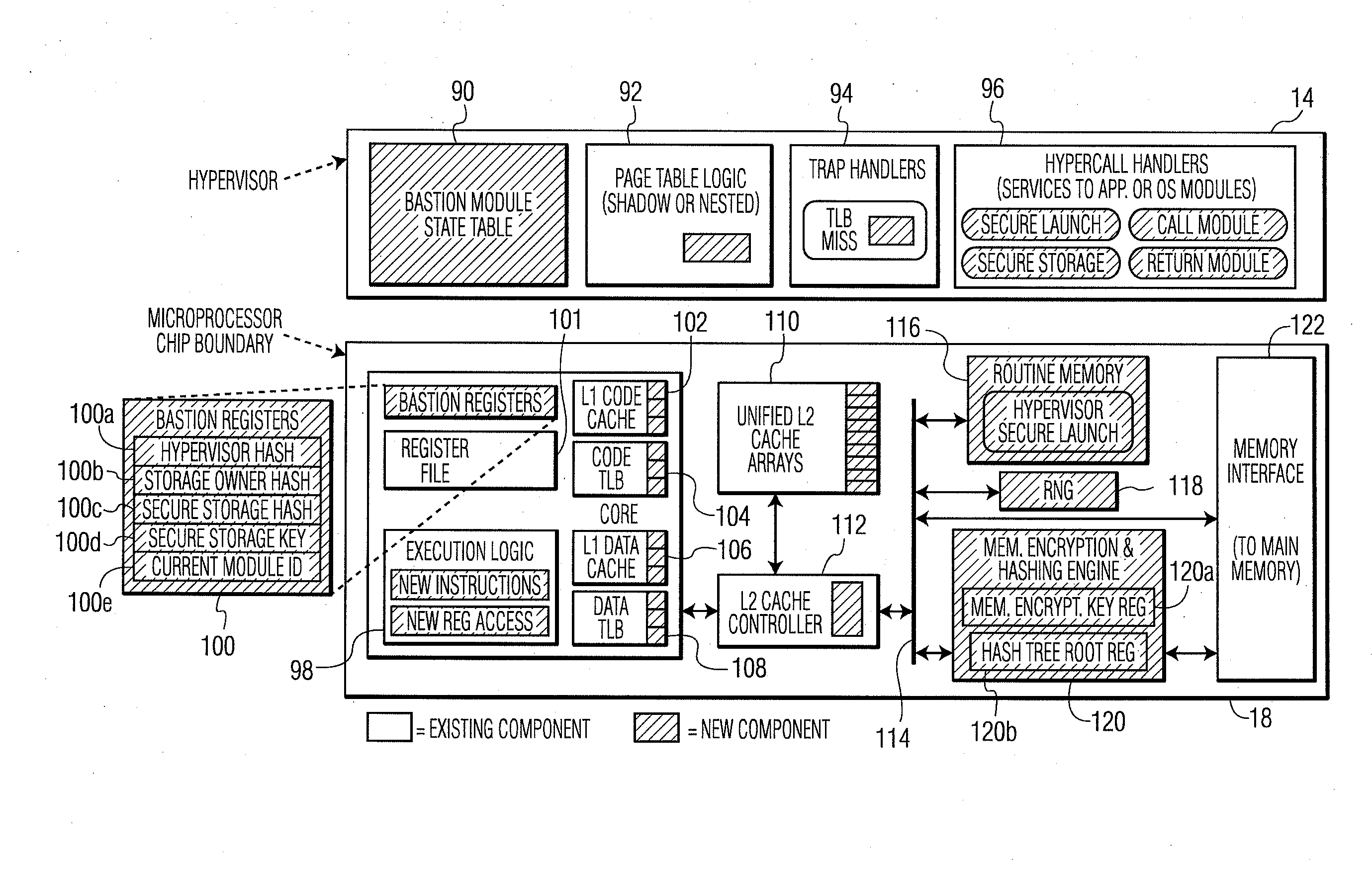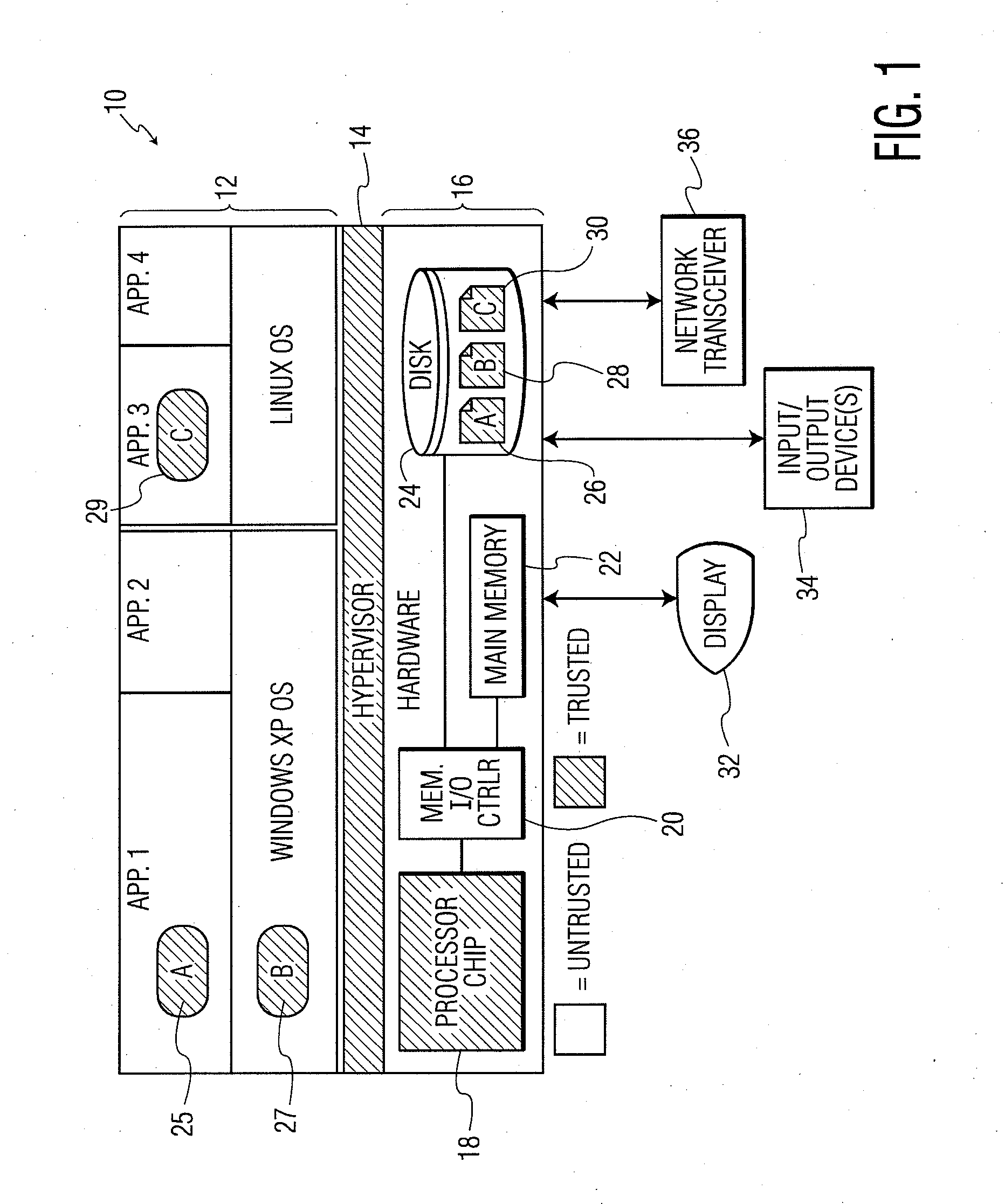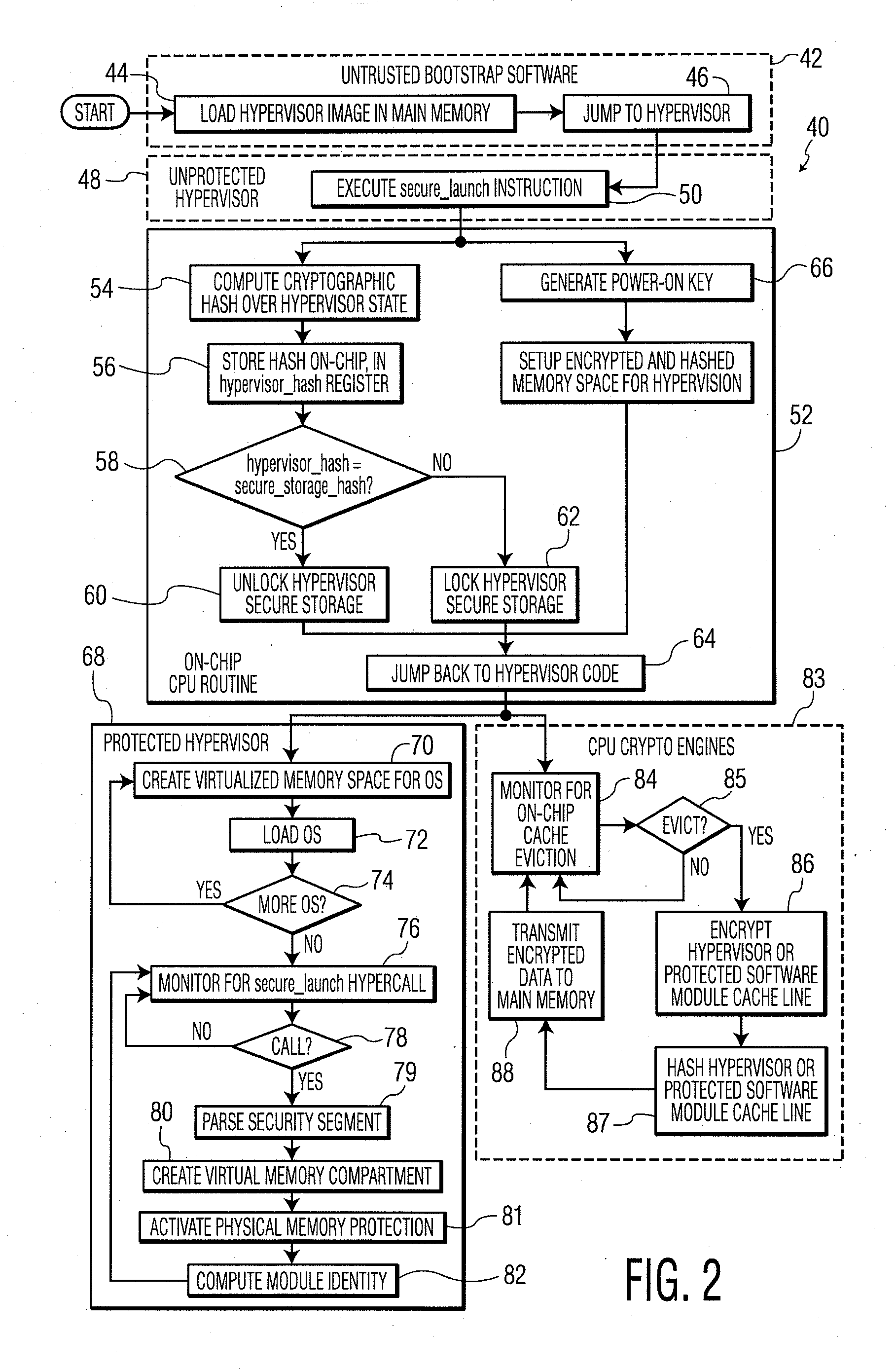System and Method for Processor-Based Security
a processor and security technology, applied in the field of computer system security improvement, can solve the problems of performance, scalability and usability issues, performance very low, and security vulnerabilities of tpm-based approaches
- Summary
- Abstract
- Description
- Claims
- Application Information
AI Technical Summary
Benefits of technology
Problems solved by technology
Method used
Image
Examples
Embodiment Construction
[0034]The present invention relates to a system and method for processor-based security, as discussed in detail below in connection with FIGS. 1-13.
[0035]FIG. 1 is a diagram showing a computer system 10 in which the processor-based security system of the present invention can be implemented. The system 10 includes a plurality of software applications and associated operating systems 12, a hypervisor 14, and computer hardware 16. The computer hardware 16 includes a processor chip 18 (which could include any desired single- or multi-core processor), a memory input / output (I / O) controller 20, a main memory 22 (which could include dynamic, random access memory (DRAM)), and a disk subsystem 24. Stored on the disk subsystem 24 are secured storage areas 26, 28, and 30 which correspond to trusted application (software) modules A, B, and C shown in FIG. 1. Also provided is a display system 32, one or more input / output devices 34 (e.g., keyboard, mouse, etc.), and a network transceiver 36 (e....
PUM
 Login to View More
Login to View More Abstract
Description
Claims
Application Information
 Login to View More
Login to View More - R&D
- Intellectual Property
- Life Sciences
- Materials
- Tech Scout
- Unparalleled Data Quality
- Higher Quality Content
- 60% Fewer Hallucinations
Browse by: Latest US Patents, China's latest patents, Technical Efficacy Thesaurus, Application Domain, Technology Topic, Popular Technical Reports.
© 2025 PatSnap. All rights reserved.Legal|Privacy policy|Modern Slavery Act Transparency Statement|Sitemap|About US| Contact US: help@patsnap.com



